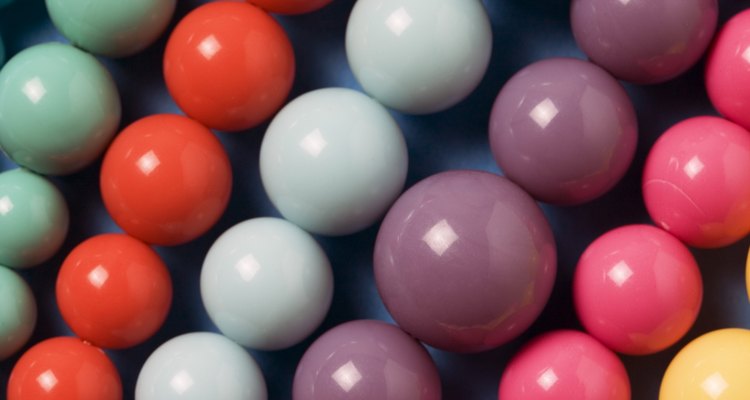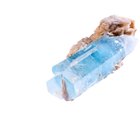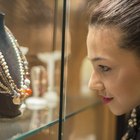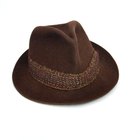
Pop beads or pop-it beads were one of the most ubiquitous fads during the 1950s. Made out of plastic, each bead connected to the next by a knob that pushed the bead into the next making a popping sound. The appeal of these beads was that they could be arranged into single or multi-strand bracelets and necklaces then taken apart to make different styles and colors. After first introduced as a fashion novelty, they soon became plastic play baubles for young girls.
Colors
When pop beads first came on the market, colors were directed more for the fashion world and included shades such as metallic gold, amethyst, pumpkin, turquoise, pearl, red and navy blue. Soon many adult pop bead enthusiasts preferred pastels such as lavender, soft yellow, delicate pink, white, baby blue and mint greens. Once the pop bead popularity reached young girls, bright colors, like bubble gum pink, and sunshine yellow, were offered. Some beads came in packets of multi-colored beads.
Materials
Pop beads were made from polyethene and other soft plastics, and by 1956, 40,000 pounds of resin was used every month to produce them. Although many of the cheaper pop beads flaked and chipped after a while, the better brands used a thermoset technique that baked the color into the bead.
Manufacturers
Pop beads were a world-wide fashion. The New York jewelry company Richelieu patented a lucite plastic bead in 1941 and manufactured many of the popular plastic bead jewelry during the 1950s. These pieces resembled pearls and other gems. Hong Kong made unusual celluloid pop beads during the 1950s that were fashioned in openwork with tiny beads inside each larger bead. They also offered beads covered with even tinier beads.
Dimensions
Adult pop-bead necklaces ranged from about 48 to 59 inches, and many sets came with matching earrings and bracelets. The beads themselves came in three sizes. The large beads were ½ inch in diameter; the medium ones were 2.5 beads per inch and the small sizes were three beads per inch. Smaller beads, a 1/4 inch in diameter were also manufactured.
Finishes
The first pop beads, introduced as women’s fashion novelties, had pearly lacquer finishes. As time went on, pop beads were available in elegant satin finishes, also. Cheaper pop-its beads were available in matte finish.
Accoutrements
One of the most unusual additions to pop beads during the 1950s were colored discs that could be inserted between beads. Connectors held multiple strands of beads together. They came in gold, silver, or metal colors, and each connector accommodated either two, three or four strands of beads.
Related Articles

Kids' Fashion of the 1980s

Where Did the Custom of Easter Baskets ...

Engagement Rings From the 1980s

History of M&M's Candies

The History of Geneve Watches

Handbags of the '80s

The Difference Between Nike Dunks & AF1

What Were Popular Hair Colors in the ...

List of the Types of Semi-Precious ...

Most Popular Drinks of the 1970s

History of Mardi Gras Beads

What Games Did Children Play in ...

Butterfinger Candy Bar Facts

What Is Trifari Jewelry?

What Is a Slave Bracelet?

What Are the Family Ties for the Greek ...

Football Facemask History

French Fashion of the 80s

1950s Gangster Clothes

The Cocktails Invented in the 1920s
References
- The Bead Site: Pop Beads
- "American Plastic: a Cultural History;" Jeffrey L. Meikle; 1995, p. 190
Writer Bio
Tonya Yirka is an Indiana-based writer who has focused on writing for online publications since 2009. She contributes many articles about Chinese culture and traditions to various websites. Yirka, a retired teacher, has a Bachelor of Science in education from Indiana University and attended classes toward a Master of Science in educational studies.
Photo Credits
Jupiterimages/Polka Dot/Getty Images